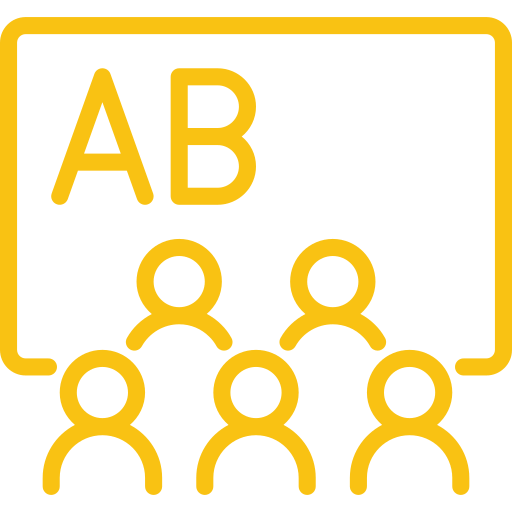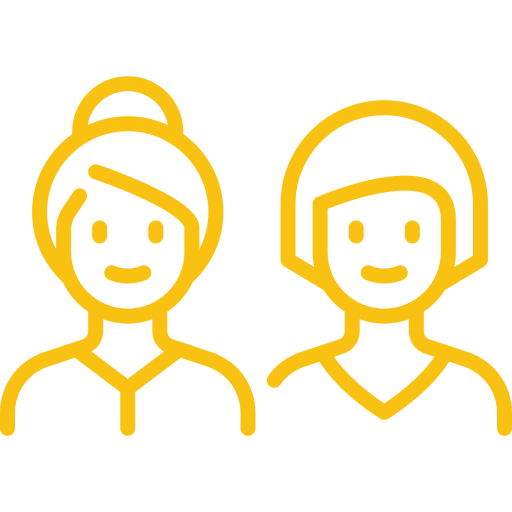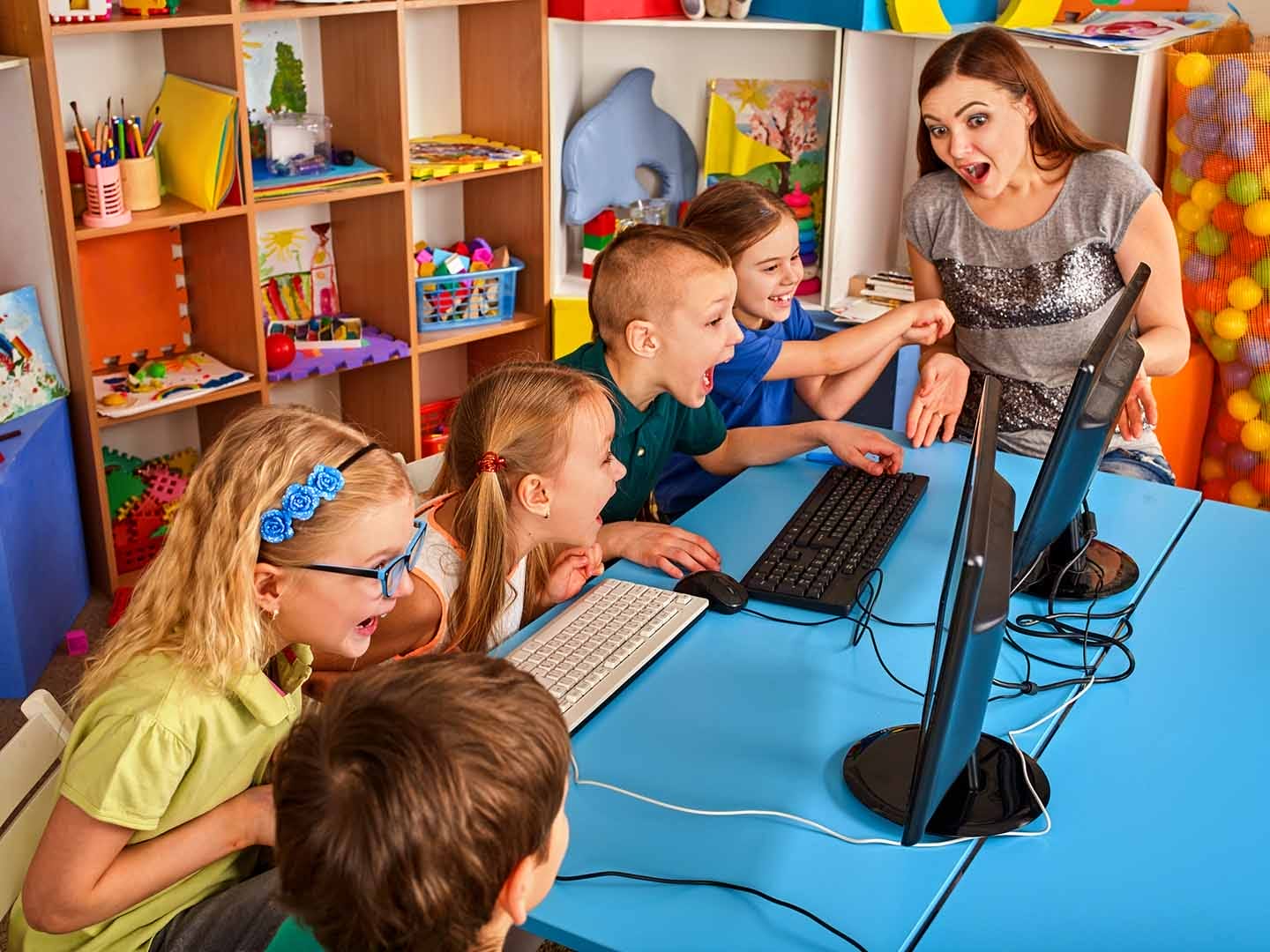Have you ever observed a student motionless in their seat, eyes fixed on the clock, longing for school to wrap up? (You know that feeling, you have it every meeting that should have been an email).
This scene is all too common in classrooms around the world. But what if I told you there’s a simple solution that can bring back energy and focus into our classrooms?
Introducing…brain break games.
A bit like taking your mind out for a walk or spinning it around on an office chair just enough to make things interesting again. Depending on how long you’ve taught, you’ve probably heard about teaching bell to bell. This blog post is written from the perspective of an actual classroom teacher, one who can tell you that you’ll boost students’ performance if you get the blood flowing.
In this post, we’re going on an exciting journey exploring how these brain breaks help students recharge mentally while improving focus and boosting creativity. We’ll dive into engaging activities tailored for different group sizes, from individuals to large groups.
We’ll dance through active games that get hearts racing, then wind down with calming exercises designed to promote relaxation. To cap it all off, we’re going to end the session on a high note, ensuring everyone leaves feeling refreshed and invigorated.
Understanding the Power of Brain Break Games
The magic behind brain break games lies in their ability to give our minds a much-needed timeout from rigorous cognitive tasks. You see, our brains aren’t built for prolonged periods of intense concentration – we need breaks. And nope – scrolling through social media doesn’t count.
There are even theories that suggest brain breaks increase our ability to process, especially when we involve physical activity. When kids sit too long, they struggle. Especially younger students, imagine a typical kindergarten brain when asked to sit still without a brain break activity. Absolutely brutal.
Mental Health Boosters? Yes Please.
Educational brain breaks, as the name suggests, incorporate an educational aspect into these fun intermissions. Think silent ball with math equations or dance parties that double up as biology revision sessions (yes dancing DNA molecules.). These activities don’t just keep students entertained; they can significantly improve their overall classroom experience too.
A report by Leonardo Cohen and the National Institute of Health, showed that regular brain breaks aren’t for cooling off. In fact, educational brain breaks increase productivity during school hours, resulting in happier students who are more focused and attentive in class (sounds like something every teacher dreams about right?). That’s because well-planned brain break activities help reset the student’s energy level while keeping them engaged on task-related information.
It’s sort of like giving your car a quick pit stop so it can finish the race stronger. Run the car too long and it breaks down at some point.
Can We Get More Benefits Here?
Brain breaks aren’t one-trick ponies though – oh no. They’re actually packed full of other benefits such as boosting creativity levels and promoting physical activity (especially important when we’re all glued to our seats for most of the day).
Ever tried jumping jacks while solving a math problem? Or doing a tree pose while brainstorming writing topics.
Sounds crazy, but it’s these unconventional ideas that make brain breaks so effective. Getting the blood pumping and energy levels up can significantly improve focus and cognitive performance.
Key Takeaway:
Brain break games aren’t your average time-outs. They’re mental pit stops that can supercharge focus, attention, and overall classroom experience for students. By weaving educational elements into these fun intermissions – think math-meets-silent ball or biology-themed dance parties – they keep minds engaged while providing a much-needed respite from intense cognitive tasks. But wait. There’s more to them than meets the eye: they also promote physical activity and creativity, making brain breaks not just enjoyable but truly beneficial.
Implementing Brain Break Games for Different Group Sizes
We all know classrooms are a melting pot of energy levels, interests, and group sizes. It’s not always easy to keep every student engaged, but with brain break games tailored to different group dynamics – you can do just that.
Mingle Mingle Group.
A favorite among teachers is the ‘Mingle Mingle Group‘ activity. This fun game gets kids moving and interacting with each other in no time. The idea is simple: play some background music while students walk around the room. When the music stops, they need to form groups based on your command – say “groups of three” or “find four partners”.
The catch? If anyone doesn’t make it into a group quickly enough or fails to get the correct number of partners (you guessed it), they’re out. To make brain breaks effective, sometimes there has to be something on the line.
Name Moves
‘Name Moves‘ is an absolute hit when dealing with smaller groups where everyone knows each other well.
Here’s how this works: Each kid associates their name with a unique movement—maybe Josh does jumping jacks while Emily opts for silent ball passes. Then one by one, as names are called out loud (no yelling please), our little participants perform their chosen move.
This keeps them guessing who’ll be next and gives them something more exciting than normal skip counting sessions during school day routine activities like lining up after recess or waiting turns at drinking fountains.
For those days when technology decides to be your best friend (or worst enemy), check out the Digital Dice for Brain Breaks video. It’s a fantastic tool to use for brain breaks, especially when you have individual students or smaller groups. Just add fun ideas to the random dice. Or better yet, have the students help come up with the activity.
Adding these games to your everyday teaching methods can really spice things up. It’s a solid strategy for making learning both enjoyable and engaging, no matter the size of the group.
Key Takeaway:
Spice up your teaching with brain break games like ‘Mingle Mingle Group’ and ‘Name Moves’. They not only cater to different group sizes but also get students moving, interacting, and engaged. Whether you’re dealing with a large class or smaller groups, these fun activities are your secret weapon for boosting energy levels and making learning enjoyable.
Active vs Calming Brain Break Games
The bustling energy of a classroom can sometimes need an outlet, just as much as it may require moments of calm and focus. Enter brain break games: activities designed to either ramp up the excitement or bring about tranquility. Whether it’s jumping jacks that get the blood pumping or breathing exercises for deep breaths of relaxation, these breaks play vital roles in managing students’ energy levels throughout the school day.
Dance Party.
If there’s one thing kids love participating in during their school day, it’s dance parties. Sesame Street’s A Very Simple Dance to Do is a favorite for kindergarten brain breaks. As soon as music plays, every student starts moving energetically with smiles on their faces. The key? Keep a wide range of movement songs ready to cater to different moods and group sizes.
Kids clap, move around, and get to act silly. Probably not for high school students, but you can probably go up to 1st or 2nd grade brain breaks depending on your students.
This active brain break game isn’t merely about fun; research shows physical activity helps release extra energy which boosts students’ attention when they return back to learning tasks post-dancing. Now that’s something we call hitting two birds with one stone.
The Breath Ball
A change of pace is necessary after all those energetic dances – let us breathe deeply into mindfulness practice. Our pick here is ‘The Breath Ball,’ courtesy of Mindful Kids Practice. This calming exercise involves focusing on your breath – inhale while expanding your arms like a giant ball then exhale bringing them close again – simple yet effective.
Breathing activities like this can be not only calming, but also beneficial to mental well-being by diminishing stress. Who knew such simple activities could be so powerful, right?
In the end, whether you’re hosting a dance party or practicing mindful breathing exercises in your classroom routine, remember that both active and calming brain break games have their place in helping students navigate their school day effectively.
Key Takeaway:
Brain break games, whether active or calming, are powerful tools for managing classroom energy. Energetic activities like dance parties can release extra energy and boost focus when students return to learning tasks. On the other hand, mindful exercises like ‘The Breath Ball’ help reduce stress levels and improve mental health. Both types of breaks play a vital role in creating an effective school day experience.
Fun and Engaging Brain Break Games for Kids
Let’s keep it rolling, there’s plenty more activities students love.
Freeze Dance.
The Freeze Dance is one of those kids’ favorite brain breaks. It’s simple yet exciting – as the music plays, students dance their hearts out. But when the music stops? The students freeze in place like statues. This activity gets their blood pumping, boosting attention levels right after. And it doesn’t take much of the kids time to do this activity, it can be a quick activity.
This game can be easily adapted based on group size or online classroom settings too. And guess what? Even adults love participating in this fun game at times.
Would You Rather?
‘Would You Rather?’ is another popular choice among teachers looking for effective educational brain breaks. The rules are straightforward: you ask your students scenarios such as “Would you rather eat ice cream every day but never chocolate again or vice versa?” Their answers not only reveal interesting insights about them but also encourage creative thinking.
Here, find some free ‘Would You Rather?’ questions tailored specifically for kids.
According to research findings from Edutopia, incorporating humor (like in our ‘Would You Rather?’ game), fun facts, language learning activities into these breaks provides an engaging experience while enhancing knowledge retention.
These active or calming sessions should be part of your daily classroom routine. It’s an approach that recognizes kids’ energy levels fluctuate throughout the day and addresses this reality head-on.
Here’s a fun fact. Research, such as this one from California State University, shows students overwhelmingly support brain breaks. So, when you notice your students losing focus or becoming fidgety, why not let them have a little time out? A short dance session, some laughter therapy or simply breathing exercises could do wonders.
Key Takeaway:
Brain break games like ‘Freeze Dance’ and ‘Would You Rather?’ give kids a fun way to recharge, spark creativity, and stay engaged during school. They can boost concentration by 20% according to studies. So when students seem distracted or restless, try letting them shake it off with a dance or laugh session.
Adapting Brain Break Games for Online Classrooms
Moving the classroom online doesn’t mean we have to give up on brain break games. In fact, it gives us an opportunity to get creative and find new ways to keep students engaged. So let’s start adapting those traditional games for our virtual classrooms.
The beauty of brain breaks is that they can be used in both traditional and online settings, making them a versatile tool for teachers everywhere. The challenge lies in how we adapt these activities to maintain their effectiveness.
Finding Interactive Elements
First off, consider interactive elements that you can incorporate into your online sessions. These might include screen sharing tools or even certain software features designed specifically for interaction.
For example, if you’re conducting a ‘silent ball’ game – why not replace the physical ball with an icon shared on-screen? This could add variety while keeping the spirit of the game alive.
5-4-3-2-1
A simple way of incorporating technology into brain break games is by having the kids stand up and do a quick list of activities. For example: 5 push ups, 4 jumping jacks, 3 burpees, 2 spins, and have the students grab 1 thing from their room to share.
Leveraging Music & Video Tools
Incorporating music isn’t just limited to having background tunes during classwork anymore. You’d be surprised how much fun kids have doing synchronized movements songs via video chat – Kidz Bop style.
If deep breath exercises are on the agenda, calming music paired with visual aids like a breathing ball can do wonders. A virtual dance party is also an exciting idea – when the music stops, everyone freezes.
Another option that has to be brought up is GoNoodle, where you can find a lot of great activities to help your kids with brain breaks.

Interactive Questioning
Besides the ‘Would You Rather’ game, there’s plenty of other question games to play among students that also work in online classrooms. A few options other than the traditional standard include the following options.
- Two Truths and a Lie: A fun way to get to know your students, and for them to get to know you.
- Hot Take: Students take a quick stand on something to strike up a conversation (oatmeal should never be in a cookie, Butterfingers shouldn’t count as candy, etc). The crazier the idea, the better it works.
- Ten Things in Common: Find 10 things that everyone in the room has in common (or pick a smaller number to speed things up)
Key Takeaway:
Transitioning brain break games to online classrooms is not only possible but can lead to innovative and engaging activities. From interactive elements like screen sharing tools, digital dice for unpredictability, leveraging music & video tools for synchronized movement songs or virtual dance parties, to the classic ‘Would You Rather’ game (and it’s alternatives) – all these strategies help maintain student engagement in a virtual setting.
Conclusion
Brain break games are the secret sauce to energized classrooms. They not only get students up and moving, but also recharge their minds, improving focus and boosting creativity.
You’ve learned how these activities can be tailored for different group sizes, from individuals to large groups. You’ve discovered that they come in all forms – active ones like dance parties that release energy or calming ones such as breathing exercises which promote relaxation.
And let’s not forget those fun favorites kids love – ‘Freeze Dance’ and ‘Would You Rather’ scenarios. These make learning interactive while providing a mental break.
In an age of online classrooms, brain breaks have shown versatility too; adapting well into virtual environments making them indispensable tools for teachers worldwide.
So next time you see a student losing interest during class hours? Give one of these ideas a go!
If you are looking to learn more ways to help with classroom management, consider taking one of our graduate classes here at MTI. We offer the most affordable graduate classes on the market, developed by real teachers.
Unlike other companies, we have zero hidden costs, and we provide the syllabus before you sign up. Some surprises are good, but they shouldn’t involve your money or time.
And if you’re interested in teaching with us, feel free to reach out via any of our social media links, or send an email to [email protected] for more details.





















